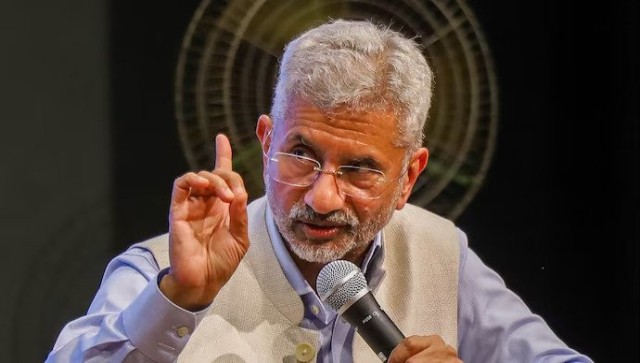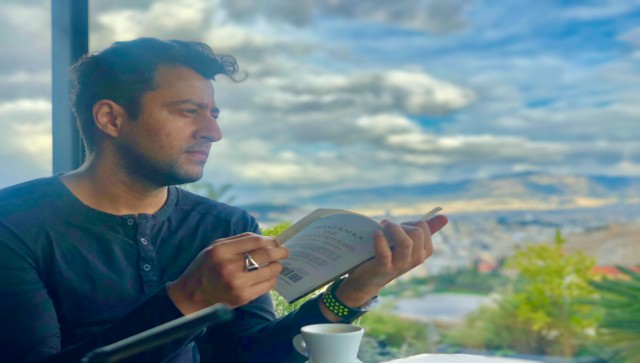Editor’s note: Up to 13 September, when the Man Booker Prize 2017 shortlist will be announced, Firstpost will be reviewing all 13 books on the longlist. This is your guide to the Booker contenders, and which ones you should read.
In Tibetan Buddhism, between death and reincarnation, one’s consciousness lingers. This intermediate state between two lives presents an opportunity. An opportunity to attain nirvana, or liberation from rebirths, for those who have arrived prepared. For others, this state can lead to terrifying hallucinations and agony, and ultimately to rebirth. The text of Bardo Thodol (popularly known as The Tibetan Book of the Dead in the West) is read to the deceased to guide their journey through this state of suspension, called the ‘bardo’. And this is where George Saunders latest novel unfolds.
Saunders’ latest, and much awaited, is his first novel following six collections of short stories and novellas (and winning the Folio prize in 2014 for Tenth of December). And Lincoln in the Bardo is one to behold.
The novel begins with the 1862 state dinner hosted by Abraham and Mary Todd Lincoln. The lavish dinner takes place against the backdrop of the bloody Civil War raging across America. But something other than the carnage or the rivalries occupy the Lincolns at the moment. Their 11-year-old son William Wallace “Willie”, suffering from typhoid fever, is dying in a room upstairs. Slowly, but surely.
On 20 February 1862, Willie passes away. The grief-stricken parents are beyond themselves as the child is interred at the Oak Hill Cemetery in Georgetown following a funeral. The mother is confined to bed for a prolonged period while the father finds it difficult to let go of his beloved son. And so he returns to the cemetery at night, aching to hold the cold body of his boy. The then President’s visits to his son’s crypt form the crux around which Saunders’ historical fiction revolves.
While Abraham Lincoln’s visits to the graveyard are a matter of historical fact; what happens to Willie after his death is where the author’s bold imagination comes to the fore. Willie is stuck in the bardo. A bardo with Saunders’ own twists and rules, and he is not alone. The cemetery is populated by scores of spirits, unable to move on, refusing to believe they are dead, but merely sick — their reasons to cling on as diverse as the afterlife crowd itself.
Saunders’ afterlife narrative is a string of conversations and thoughts, chiefly among the trio of Roger Bevins III, a young gay man who slits his wrists after being rejected by his lover; Hans Vollman, a painter who was killed in an accident before he could consummate his marriage with a much younger wife; and the Reverend Everly Thomas, who knows much more about the afterlife than he lets on. The three desperately seek to convince the newly arrived Willie to move on from the bardo and save him from the terrible fate unleashed upon younger spirits for their refusal to depart. But believing that his father needs him, the child holds on.
The life outside the cemetery, the more tangible of the worlds, is a collage of witness experiences, diary entries, letters and newspapers reports, meticulously cited and compiled in the most elegant manner. Saunders juxtaposes the texts on events like the state dinner and young Willie’s suffering in the room upstairs in a surreal yet quite effective manner. The author also uses multiple accounts of the same events, most real, some made up, to expose how unreliable the retelling of history can be, and perhaps one could be forgiven for filling up the gaps using one’s own imagination.
Then there is the playing-with-fire matter of telling the story from Abraham Lincoln’s point of view. Lincoln is overcome by grief, and through his own loss and sorrow reflects upon the same of thousands who have lost their loved ones in the ongoing Civil War. The contemplative President looks for comfort and finds strength. These are some of the most powerful and emotionally charged parts of the book. Lincoln’s presence is so overwhelming in these pages that the scenes which unfold in his absence often feel unconvincing and lacking depth.
As one might expect, death reigns as the overwhelming theme of the novel. The reader is often confronted with the notions of mortality, and through death, to meditation on life itself. With dozens of characters and their stories, their desires and losses, Saunders paints a compassionate and heartbreaking portrait of both personal loss and the human condition at large.
For all its many spirits and their tangled world, Lincoln in the Bardo is a deeply human tale of ordinary lives. Of ordinary ambitions and ordinary regrets. Of loneliness and pursuit of happiness. And Saunders is an empathetic writer who can find humour and charm in the darkest of places.


)




)
)
)
)
)
)
)
)